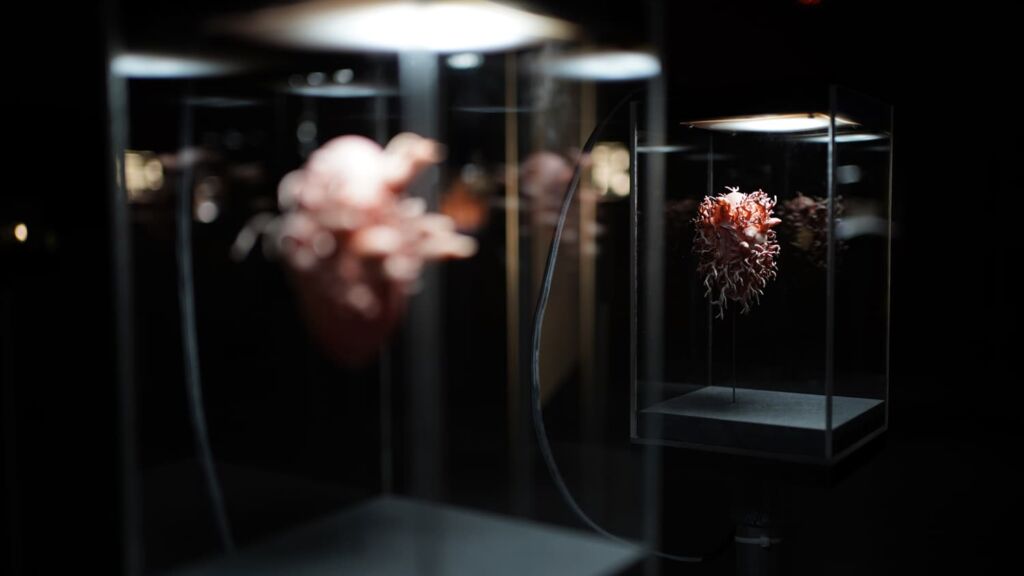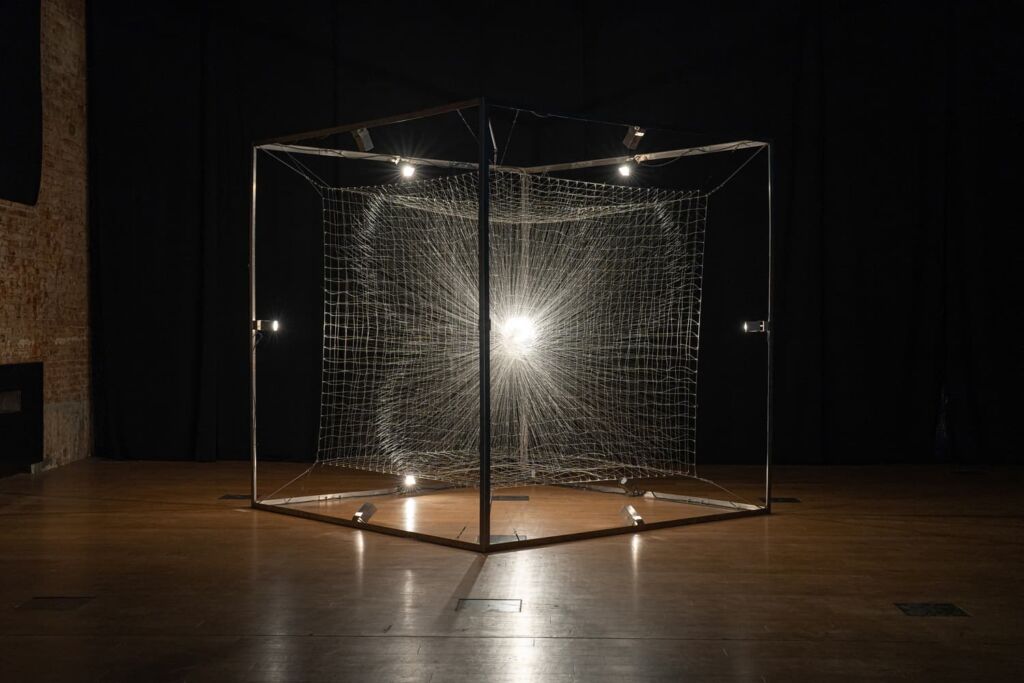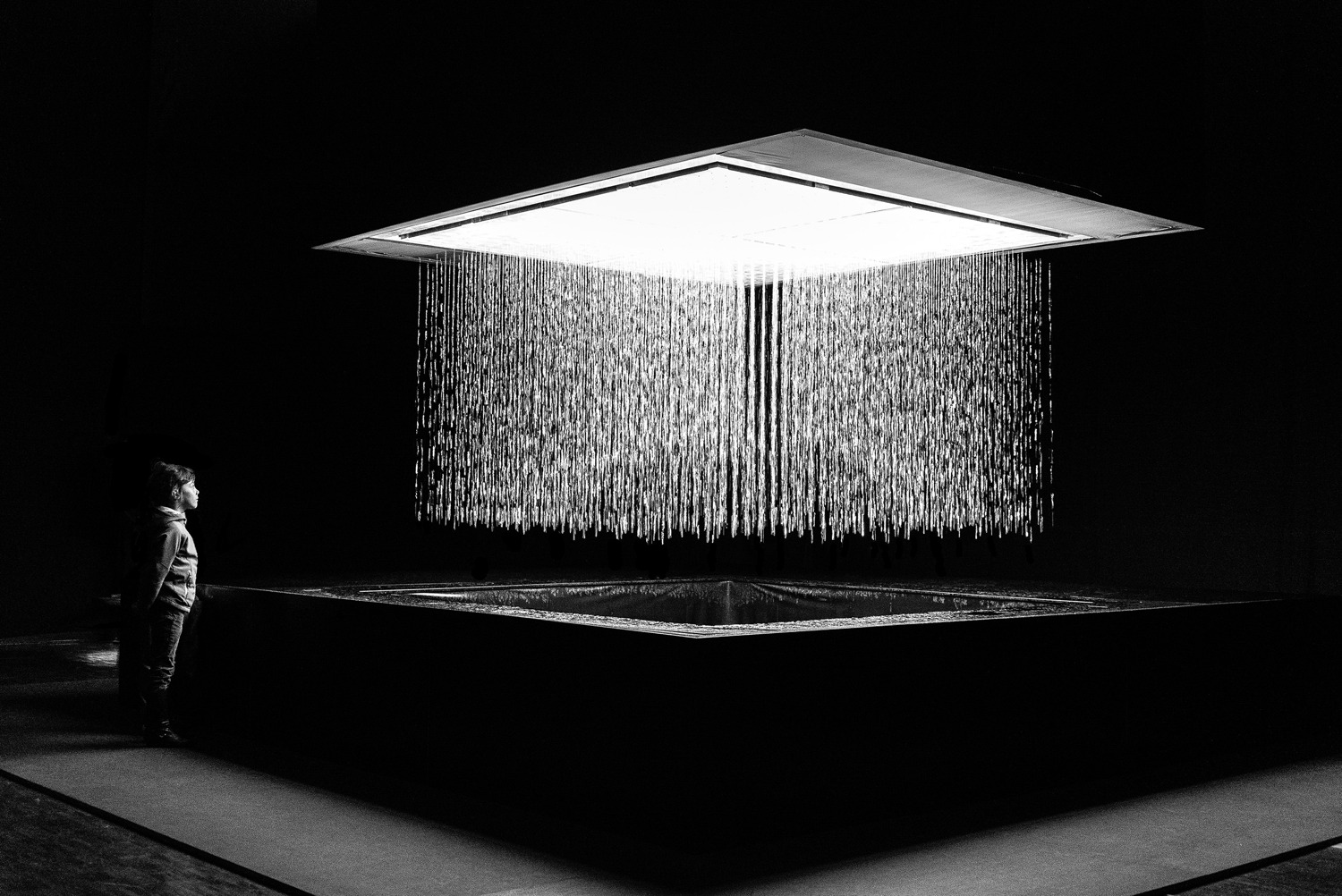Text by Juliette Wallace

Close your eyes and picture the word “digital”. What does it look like to you? You may be imagining electricity, computer screens and 3D printers. You may be thinking of video games and Pixar cartoons and the intricate landscapes, settings and human emotions portrayed through the art of digital graphics.
If you’re one of our more retro readers, you may even be picturing a vertical cascade of green numbers down the screen of a chunky, grey PC and those unmistakable glitchy, clicking sounds as statistics are tallied up and analysed. Any of these images would be a fair and accurate association with the term “digital”, but this rapidly growing, changing and expanding realm is complex and broad, with endless possibilities.
DIMENSIONS: Digital Art Since 1859, the recently opened international exhibition, has taken it upon itself to tackle this expansive digital landscape through a vast and varied show, demonstrating to the viewer both the understood and the unfamiliar, challenging our concept of what is digital and planting seeds of what may be yet to come.
Much like the contents of the show, DIMENSIONS: Digital Art Since 1859 is a concept that goes way back, beginning as an abstract idea in the young mind of the exhibition’s head curator (of three), Richard Castelli. Castelli, who is now a highly acclaimed cross-disciplinary curator, producer and art-world figure, sparked what would later become DIMENSIONS with the idea for one of the show’s pieces: the artwork Six Holograms from L’ENFER by Henri-Georges Clouzot.
This piece, a beautiful and hypnotic series of colourfully portrayed digital holograms taken from the experimental video made by the French filmmaker Henri-Georges Clouzot in the 1960s, was conceptualised, directed and produced by Castelli with his art production company Epidemic. It was following the serendipitous crossing of paths of Castelli and Clouzot’s wife in an elevator, in which they were stuck for two hours, that Castelli was able to bring his idea, which had been brewing for years, to fruition.
Clouzot’s original film, an exploration into the power of artificial lighting and the impact that this has on the organic, human form, was taken a step further by Castelli through transposing the work into the medium of the digital hologram. As is his wont, Castelli became inspired by the concept and ran with the basic premise of the film – the observation of shifting light across a 3D surface – away from a fixed, repeating loop which the medium of film necessitated, into a space where the travelling of light could happen spontaneously according to the will of the viewer.
Castelli’s use of hologram allowed for the viewer to drive and determine the light movements through their own engagement in the piece, thus completing Clouzot’s thought trajectory through the use of new technology. The fundamentals of Six Holograms from L”ENFER by Henri-Georges Clouzot: looking to the past in order to pave new roads for our future and exploring the natural curiosity of artists in an unfamiliar context, set out what DIMENSIONS would later become.

Housed in the impressive industrialisation-era machine factory, the Pittlerwerke building in Leipzig, DIMENSIONS: Digital Art from 1859 includes sixty artworks spanning across various media and countries. The show, which was co-curated by Dan Xu and Clara Blume along with Richard Castelli, includes four new productions, ten European premieres and seventeen German premieres, amongst its vast content.
Each piece has its own value and personality, but the power of the show is in the dialogue created between the works as they communicate with each other across the jaw-dropping 10,000 square meters that constitutes the exhibition’s setting, the Pittlerweke building. The show includes works by LaTurbo Avedon, Refik Anadol, Ryoji Ikeda, Jakob Kudsk Steensen, Operator, Nancy Baker Cahill, Casey Reas, Nam June Paik, Danielle Brathwaite-Shirley, Studio Above & Below, among many others.
Housed in the outskirts of Leipzig and originally erected in 1899 as a machine tool factory, the Pittlerwerke building – with its own fascinating and somewhat disturbing history (including a Nazi take-over and a necessity to re-invent itself) – provides the perfect setting for the experimental, visual dialogue that DIMENSIONS is. Its impossibly tall ceilings, attractive red-brick walls and varied spaces – some small and dark, some bright and light-filled, some expansive and epic – allow for the multitude of artistic styles included in the show to be exhibited to their fullest potential.
The exhibition is divided into chapters – media and visual, immersive art, robotic art, algorithmic-generative art, and virtual and augmented reality. The artworks included in each chapter range across digital possibilities, from one-of-a-kind Non-Fungible Tokens (NFTs) to robotics, to digital mimicry.
The DIMENSIONS curatorial team has done an impressive job in selecting, accumulating and placing the exhibition’s contents together, both conceptually and physically, which has the outcome of expanding the viewer’s notion of what they expect digital artworks to constitute.
We want to retrain the concept of digital claim the curatorial team, who, as well as attempting to challenge preconceived notions of digital art are also interested in using the art realm to shine a light of the power and span of digital as a whole, demystifying the field.
New technologies are omnipresent and are increasingly becoming a projection surface for expectations and fears – from AI to blockchain. In the exhibition DIMENSIONS, we explore the question of what we as a society can learn from art in order to master the digital transformation. As more opportunities open up through technology, the more crucial the human skills of creativity and contextual competence become, explains co-curator Dr Dan Xu. The broad selection of artists and artworks is, thus, for this curatorial team, a necessary means by which to achieve this goal.
Castelli and his team are interested in what Castelli has termed “digital classicism” – established works that come from an accepted group of digital artists – and where digital art is headed from there. The viewer, who may or may not be familiar with “digital classicism” and may or may not have some preconceived notions of what to expect in a digital artworks exhibition, is immediately thrown off the pre-paved digital path with the first works of the show, presented in the monumental entry hall.
The Berlin-based Croatian artist, Ivana Franke, takes over the huge first room with an installation created especially. Without a computer screen in sight, Franke challenges the thresholds of the viewer’s perception through her sculptural triptych that turns the digital on its head. Having begun in the belly of a computer, the works – originally conceived by the computer as 6D pieces – manifest in a 3D realm through intricate patterns of clear wire, plastic sculptures and light plays.

Franke’s multi-disciplinary work draws from neuroscience research and combines technology and architecture. As well as rejigging the notion of what “digital” means, the work also presents a democratisation of digital artworks through demonstrating low-budget works in this realm, further challenging our preconceived notions of the digital, which usually involves expensive and thus exclusive technology and equipment.
The next room explains the date in the title of the exhibition and confirms that we, the viewer, should put aside our assumptions on what we may be about to experience and simply open ourselves up to what the show has to offer. A small figurine stands alone on a white plinth, his 19th-century attire giving away the fact that the piece dates back to 1859. Created by French sculptor Francois Willème, the statuette represents what DIMENSIONS presents as the first 3D printer, invented by Willème himself.
Francois Willème…succeeded in 1859 in capturing motifs from all perspectives through the simultaneous use of 24 cameras. By superimposing these simultaneously achieved photographic images, his photo sculptures prepared the way for today’s 3D scan.
Although this is the only work to date back as far as the 19th century – due both to curatorial decisions as well as to the limitations of acquiring older pieces of this kind – the sculpture and what it represents contextualises the digital and allows for a broader approach to the medium.
As the exhibition unfolds, so do the possible aspects of the show’s theme, including a wider view on digital’s impact on society as a whole. Online self-organisation of citizens against censorship by the Chinese government is broached by native Chinese artist Miao Ying, whilst the impact of NFTs and QR codes is explored by a handful of the show’s contributors.
The mainstream use of artistic digital technology is demonstrated through the work of Emmanuel Carlier, whose experimentation with simultaneous multi-camera shutter coordination was employed by the hugely successful ‘90s blockbuster the Matrix in their famous action freeze-frames. Alongside these more conceptual pieces are works that function on a primary-impact level in their beauty and hypnotic powers, including the monumental work 3D Water Matrix – a digital rain sculpture created by the Japanese artist Shirō Takatani.
The size of the show is explained and justified by the curators’ ambitious approach to the digital. What could otherwise be an exhausting experience proves to be something inspiring and exciting as each room presents a new facet of the exhibition’s theme.
The show will be running at Pittlerwerke until early July, and this author recommends that you make a pilgrimage for the occasion (perhaps allowing for a second visit if you are a sufferer of museum fatigue…). Whilst many of us are sceptical about the impact of the digital on both the art world and our society as a whole, DIMENSIONS proves that there is much to be celebrated, and I, for one, am excited about what is yet to come…






